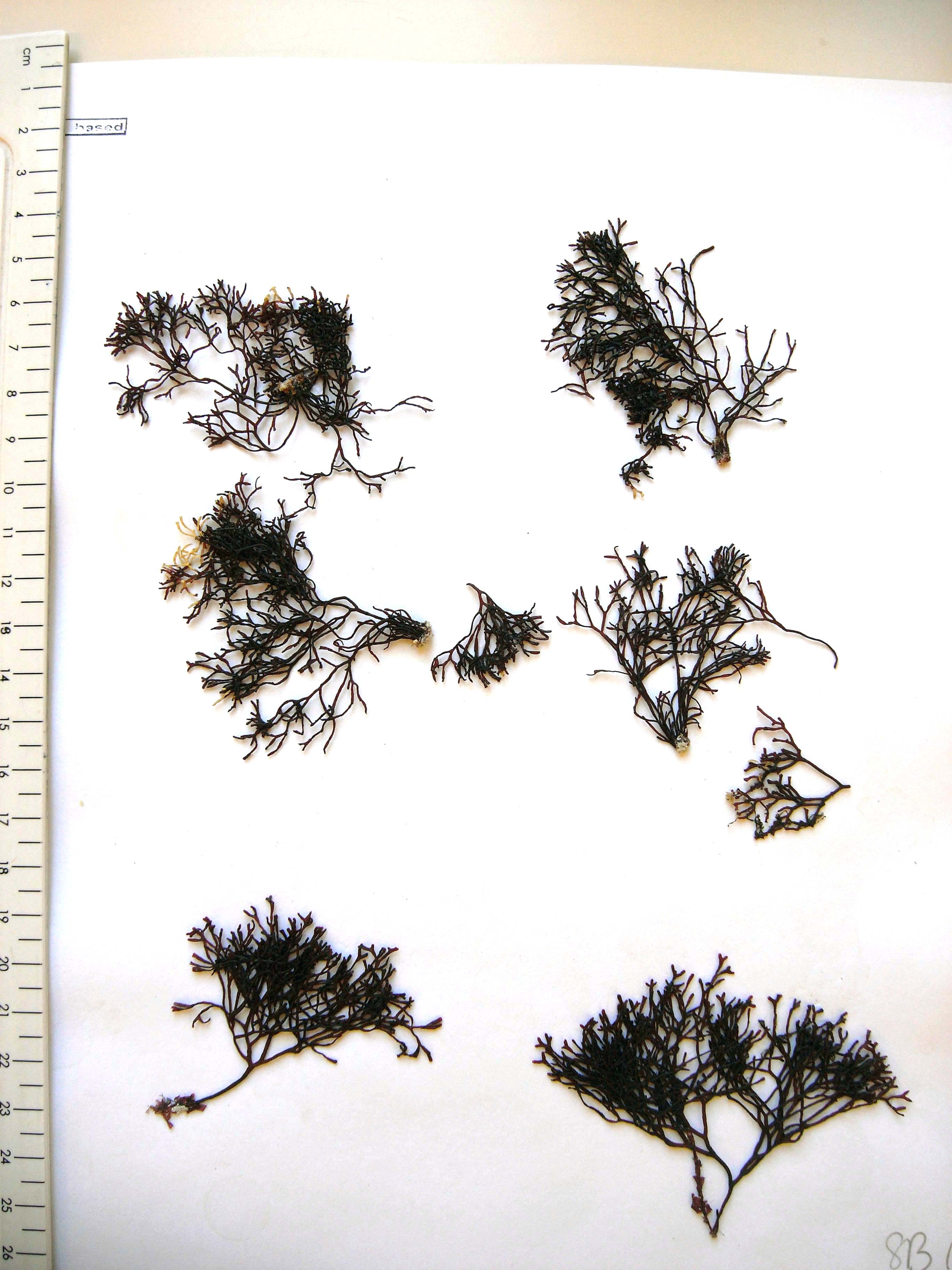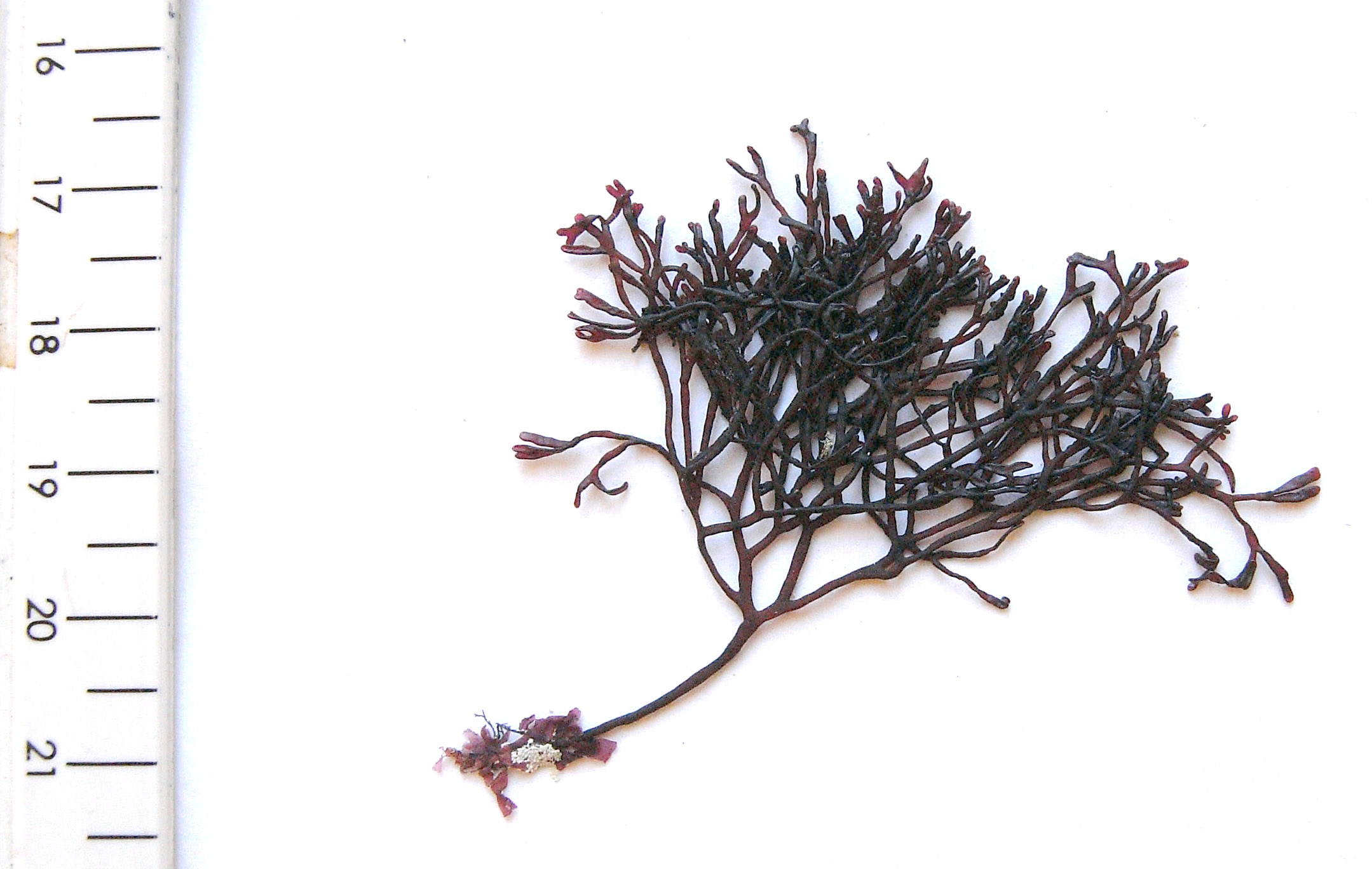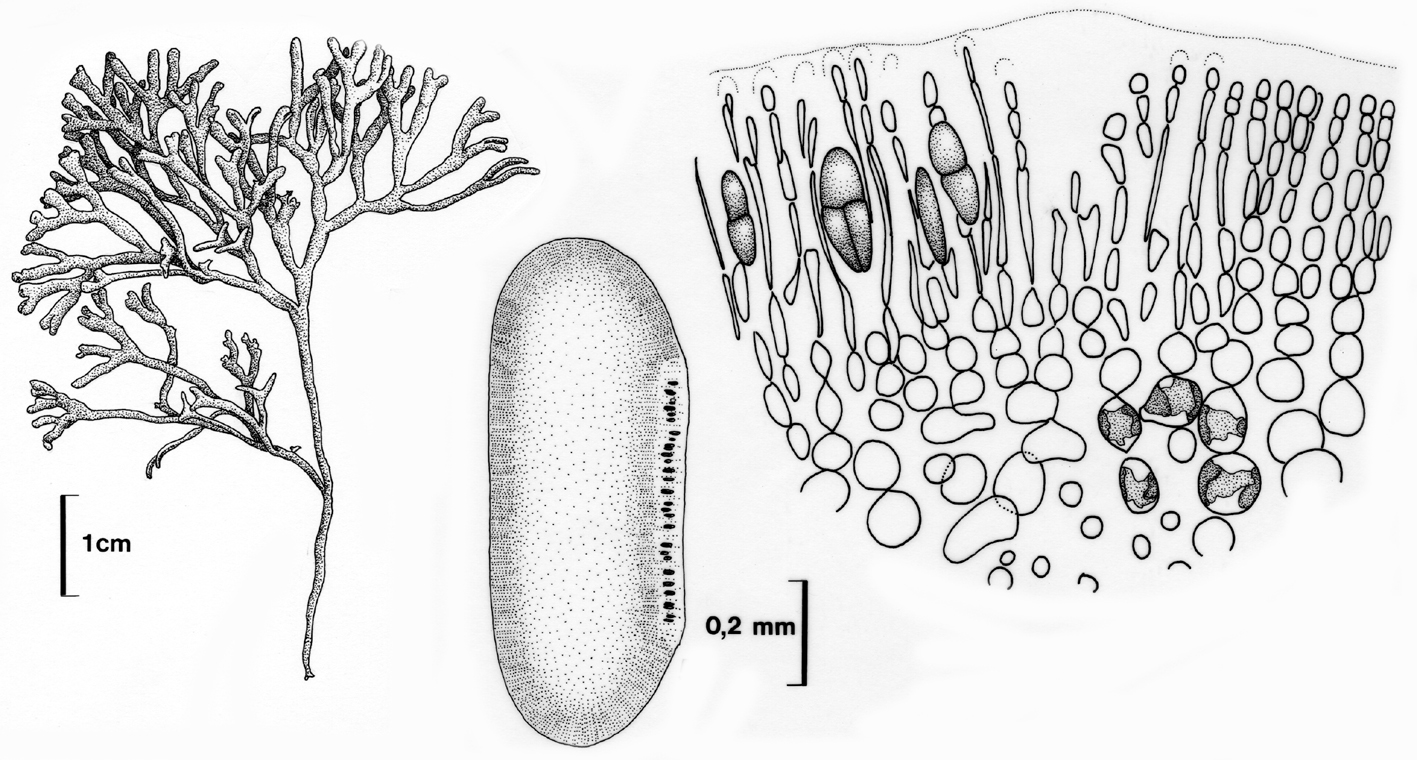Seaweeds of the South African South Coast


Order Halymeniales
Family Halymeniaceae
Polyopes constrictus (Turner) J. Agardh 1851: 239
Plants erect, dark red to blackish, 5-15 cm tall, comprising a tuft of branched cartilaginous uprights arising from a common, inconspicuous discoid holdfast; uprights subcylindrical to flat, 1-2 mm wide throughout, often with slight constrictions at irregular intervals, branching usually dichotomous, sometimes secund or opposite; margins entire or occasionally bearing lateral pinnate branchlets up to 2 (-5) mm long. Structure of cellular cortex and filamentous medulla. Medulla of dense, interwoven filaments interspersed with stellate cells and occupying 60-80% of the thallus thickness. Cortex of anticlinal rows of 8-12 cells (more in older parts) in dichotomously branched filaments; outermost cortical cells 2.5-3.5 µm wide.
Tetrasporangia produced only in nemathecium-like sori near the ends of uprights, sori elevated above or level with surface of cortex; sporangia immersed, about 25x10 µm, cruciately or decussately divided. Cystocarps immersed in thallus, lacking ostiole.
Collections, ecology and regional distribution
Recorded from Namibia and along the entire South African west coast to Kei Mouth (1- 43). West coast specimens can be notably longer (to 25 cm) than those from the south coast. Epilithic or sometimes epiphytic in the lower eulittoral to shallow sublittoral zone.
World distribution: Also recorded from southern Australia (Womersley & Lewis 1994).
Type locality: Bass Strait, Australia (Womersley & Lewis 1994).
Note: See Chiang (1970) and Womersley & Lewis (1994) for detailed descriptions of this species.

Polyopes constrictus, Jongensfontein (BOL). Scale values in cm.

Polyopes constrictus, Jongensfontein (BOL). Scale values in cm.

Polyopes contrictus. Left to right: habit, cross setion of thallus with tetrasporangial sorus, Detail of section through tetrasporangial sorus (largest terasporangium 25 µm long). Reproduced from Stegenga et al. (1997).
References Polyopes
Agardh, J.G. 1851. Species genera et ordines algarum, seu descriptiones succinctae specierum, generum et ordinum, quibus algarum regnum constituitur. Volumen secundum: algas florideas complectens. Part 1. pp. [ii*-iii*], [i]-xii, [1]-336 + 337-351 [Addenda and Indices]. Lundae [Lund]: C.W.K. Gleerup.
Chiang, Y-M. 1970. Morphological studies of red algae of the family Cryptonemiaceae. University of California Publications in Botany 58: 95 pp.
Stegenga, H., Bolton, J.J. and R. J. Anderson. 1997. Seaweeds of the South African west coast. Contributions from the Bolus Herbarium 18: 655 pp.
Womersley, H. B. S. & Lewis, J. A. 1994. Family Halymeniaceae Bory 1828: 158. In: The marine benthic flora of southern Australia. I Bangiophyceae and Florideophyceae (Acrochaetiales, Nemaliales, Gelidiales, Hildenbrandiales and Gigartinales sensu lato). (Womersley, H.B.S., Ed.), pp. 167-218. Canberra: Australian Biological Resources Study.
Cite this record as:
Anderson RJ, Stegenga H, Bolton JJ. 2016. Seaweeds of the South African South Coast.
World Wide Web electronic publication, University of Cape Town, http://southafrseaweeds.uct.ac.za; Accessed on 07 January 2026.